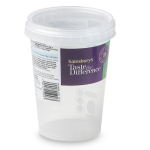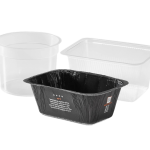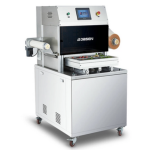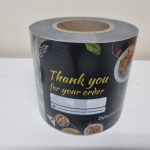Tamper-evident containers play a critical role in ensuring the safety and integrity of various products, including food, pharmaceuticals, and personal care items. These containers are designed to provide visible evidence of tampering, assuring consumers that the contents have not been compromised. In this article, we will take a closer look at the manufacturing process of tamper-evident containers.
1. Design and Mould Creation:
The manufacturing process begins with the design phase, where engineers and designers create the blueprint for the tamper-evident container. Factors such as size, shape, material, and tamper-evident features are taken into consideration. Once the design is finalized, a mould is created. The mould is typically made of metal, such as aluminium or steel, and is shaped to match the desired container design.
2. Material Selection:
Tamper-evident containers are commonly made from various materials, including plastic, glass, or metal. The selection of material depends on the specific requirements of the product being packaged. Plastic, such as high-density polyethylene (HDPE) or polypropylene (PP), is a popular choice due to its durability, flexibility, and cost-effectiveness. Glass containers offer a premium look and feel, while metal containers provide strength and barrier properties. The chosen material is then prepared for the manufacturing process.
3. Injection Moulding (Plastic Containers):
For plastic tamper-evident containers, the most common manufacturing method is injection moulding. The process starts by heating plastic pellets or resin to a molten state. The molten plastic is then injected into the mould under high pressure, filling the cavities and taking the shape of the container. After cooling, the mould is opened, and the newly formed container is ejected. Injection moulding allows for high production volumes and precise replication of the container design.
4. Glass Forming (Glass Containers):
Glass tamper-evident containers are manufactured through a process called glass forming. This process involves heating glass in a furnace until it reaches a molten state. The molten glass is then formed using various techniques, such as blowing, pressing, or casting, to create the desired container shape. The formed glass container is then annealed to relieve any internal stresses and increase its strength. Additional processes like frosting or labelling may be applied to enhance the container’s appearance and functionality.
5. Metal Forming (Metal Containers):
Metal tamper-evident containers, such as aluminium or tinplate cans, are produced through metal forming processes. These processes typically involve the use of specialized machinery to shape flat metal sheets into the desired container shape. Techniques like deep drawing, pressing, or stamping are employed to form the metal into the desired contours and dimensions. Metal containers often undergo additional processes like coating, printing, and sealing to provide a protective and visually appealing finish.
6. Tamper-Evident Features Integration:
During or after the container manufacturing process, tamper-evident features are integrated into the design. These features can include tamper-evident bands, tear strips, breakable seals, or indicators that provide visible evidence if the container has been opened or tampered with. These features are crucial for ensuring the integrity and safety of the product.
7. Quality Control and Packaging:
Throughout the manufacturing process, quality control measures are implemented to ensure that the tamper-evident containers meet the required standards and specifications. This includes inspections for dimensional accuracy, structural integrity, and the proper integration of tamper-evident features. Once the containers pass the quality control checks, they are packaged and prepared for distribution and use.
Manufacturing tamper-evident containers involves a combination of design, material selection, specialized manufacturing techniques, and integration of tamper-evident features. The process ensures that the containers provide the necessary protection and visible evidence of tampering, ultimately giving consumers peace of mind when using products sealed within them.





